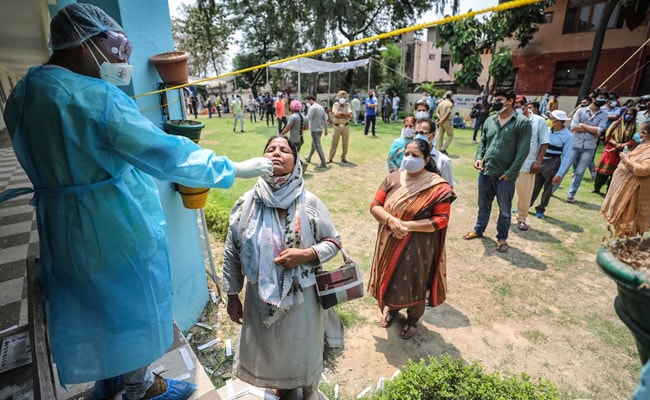Centre's New SOPs To Battle Covid In Rural Parts Amid Surge
The new SOPs outline the Covid containment and clinical management practices for rural and semi-urban areas.
Village-level surveillance, tele-consultation with community health officers, and training in rapid antigen testing are among the several areas of focus in the Centre's new SOPs to battle COVID-19 as the pandemic gradually moves to the semi-urban and rural areas of the country.
It is important, the SOPs suggest, to ensure that community-based services and primary health infrastructure in these areas are equipped to manage infections.
"In every village, active surveillance should be done for influenza-like illness/severe acute respiratory infections (ILI/SARI) periodically by ASHA with the help of Village Health Sanitation and Nutrition Committee (VHSNC)," the guidelines say.
"Symptomatic cases can be triaged at village level by teleconsultation with community health officers, and cases with comorbidity/low oxygen saturation should be sent to higher centres," they say.
Depending on the intensity of the surge and the number of cases, contact tracing must be done as far as possible based on the Integrated Disease Surveillance Programme's guidelines.
"Monitoring of oxygen saturation is important for monitoring of Covid patients. For this, it is desirable for each village to have an adequate number of pulse oximeters and thermometers," the SOPs say.
A home isolation kit shall be provided to all active cases. Each kit must include medicines like paracetamol, ivermectin, cough syrup, and multivitamins, besides a detailed pamphlet indicating the precautions to be taken, a proforma to monitor the patient's condition, contact details in case major symptoms showing up or deterioration of health.
"Patients under home isolation will stand discharged and end isolation after at least 10 days since the onset of symptoms (or from date of sampling for asymptomatic cases) and no fever for three days. There is no need for testing after the home isolation period is over," the guidelines say.


Comments
Post a Comment